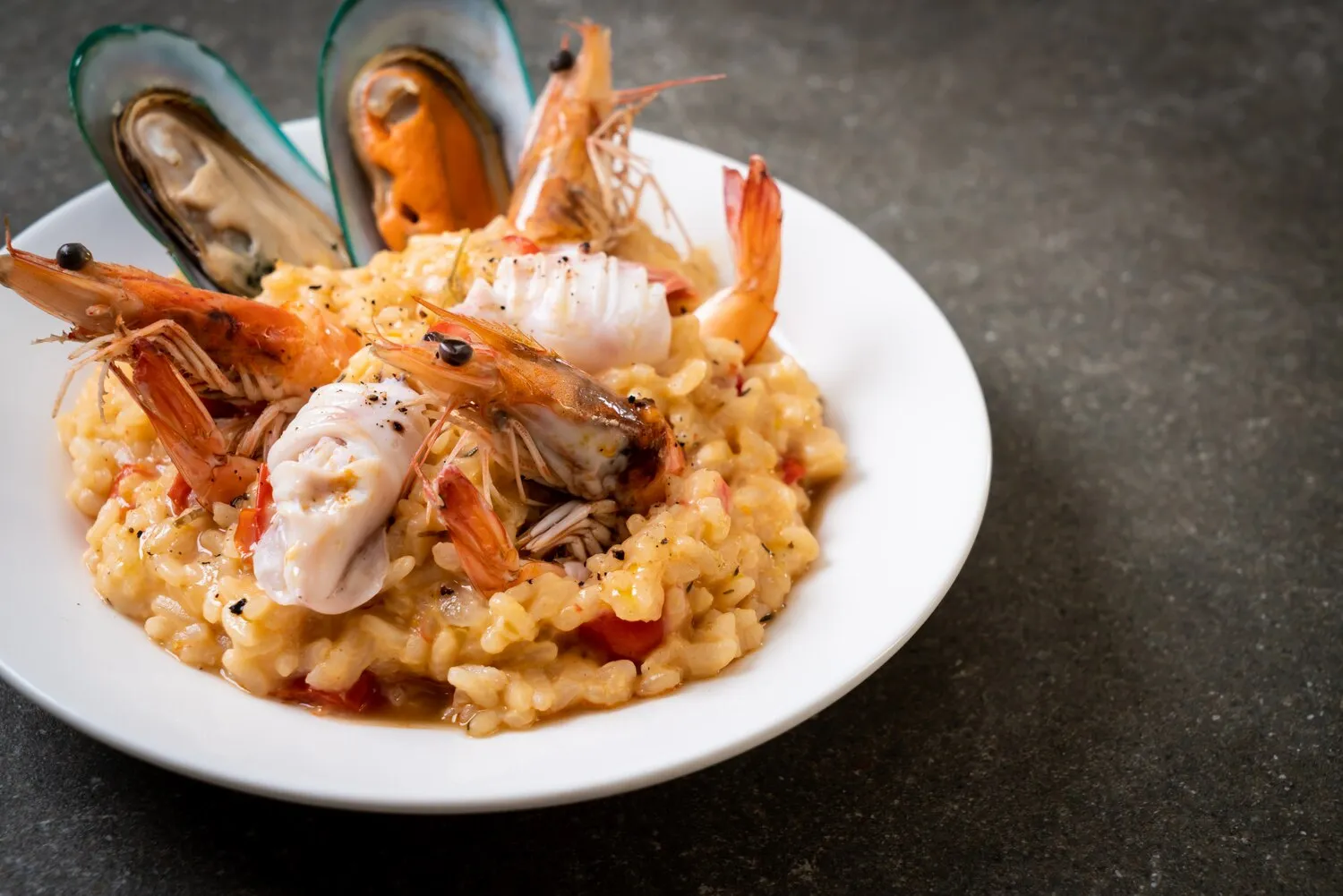
Arroz de Marisco
Seafood rice, a flavorful rice dish cooked with various types of seafood like shrimp, clams, and mussels. Often served in a pot.
Nutrition Facts
* The % Daily Value (DV) tells you how much a nutrient in a serving of food contributes to a daily diet. 2,000 calories a day is used for general nutrition advice.
Portugal's long coastline and rich maritime history have profoundly shaped its cuisine. Arroz de Marisco, like many Portuguese dishes, reflects the country's access to fresh seafood and the resourcefulness of its people. The dish likely evolved as a way to utilize various types of seafood, combining them with rice, a staple ingredient adopted through trade and historical influences from Asia and North Africa. It represents a culinary tradition born from the sea and adapted over centuries.
Arroz de Marisco is more than just a meal; it's a celebration of Portuguese maritime heritage and a symbol of communal dining.
Communal Eating
Traditionally, Arroz de Marisco is served in a large pot, encouraging diners to share and enjoy the meal together. This fosters a sense of community and conviviality.
Special Occasions
While enjoyed year-round, Arroz de Marisco is often prepared for special occasions, family gatherings, and festive celebrations, particularly along the coastal regions.
Regional Variations
Different regions of Portugal may have their own variations of Arroz de Marisco, using locally sourced seafood and adding unique spices or herbs.
National Pride
Arroz de Marisco is considered a national dish, showcasing Portugal's culinary identity and its connection to the sea.
Arroz de Marisco is characterized by a rich, savory, and briny flavor profile, dominated by the taste of fresh seafood.
The dominant flavor is seafood: shrimp (camarão), clams (ameijoas), mussels (mexilhões), and sometimes lobster (lagosta) or crab (sapateira) contribute distinct oceanic notes. Onions, garlic, tomatoes, and peppers (pimentos) create a savory base. White wine adds acidity and depth, while cilantro provides a fresh, herbaceous counterpoint. A touch of piri-piri (chili pepper) can introduce a subtle warmth. The rice absorbs all these flavors, becoming infused with the essence of the sea.
Fresh Seafood is Key
Use the freshest seafood available for the most authentic and flavorful dish. Look for seafood that is firm, smells clean, and has bright, clear eyes (if applicable).
Use High-Quality Rice
Carolina rice (Arroz Carolino), or a similar short-grain rice, is ideal for absorbing the flavorful broth and creating a creamy texture.
Don't Overcook the Rice
The rice should be cooked al dente, retaining a slight bite. Avoid overcooking, as this can result in a mushy texture.
Adjust Liquid Levels
The amount of liquid (water or broth) may need to be adjusted depending on the type of rice used and the desired consistency. Start with the recommended amount and add more if needed, ensuring the rice is moist but not soupy.
Let it Rest
After cooking, let the Arroz de Marisco rest for a few minutes before serving. This allows the flavors to meld together and the rice to settle.
Explore additional Traditional dishes and restaurants
Explore TraditionalDiscover top dining spots and culinary experiences in São Carlos.
Explore São CarlosLearn more about the food culture, restaurant scene, and culinary heritage of Brazil.
Explore Brazil